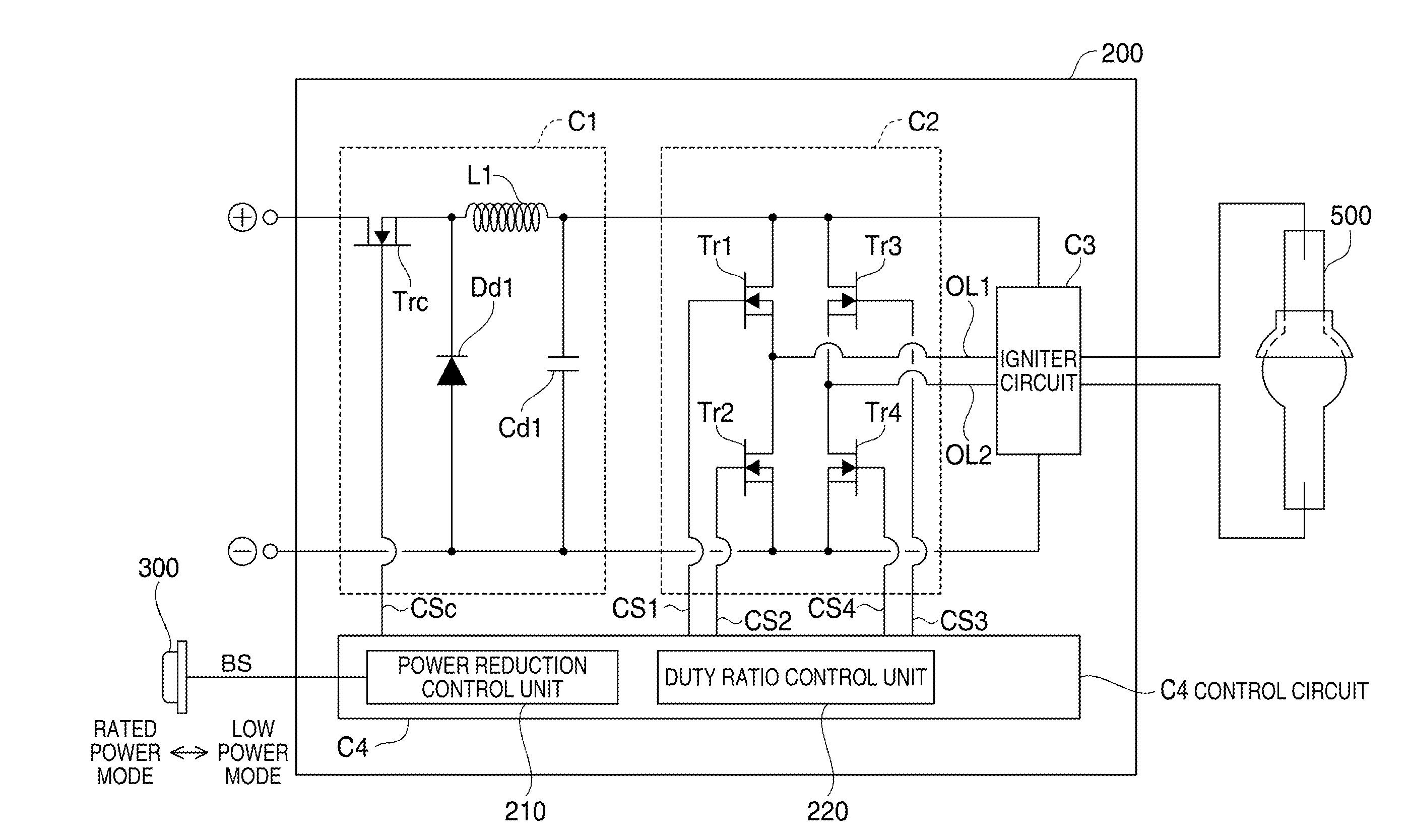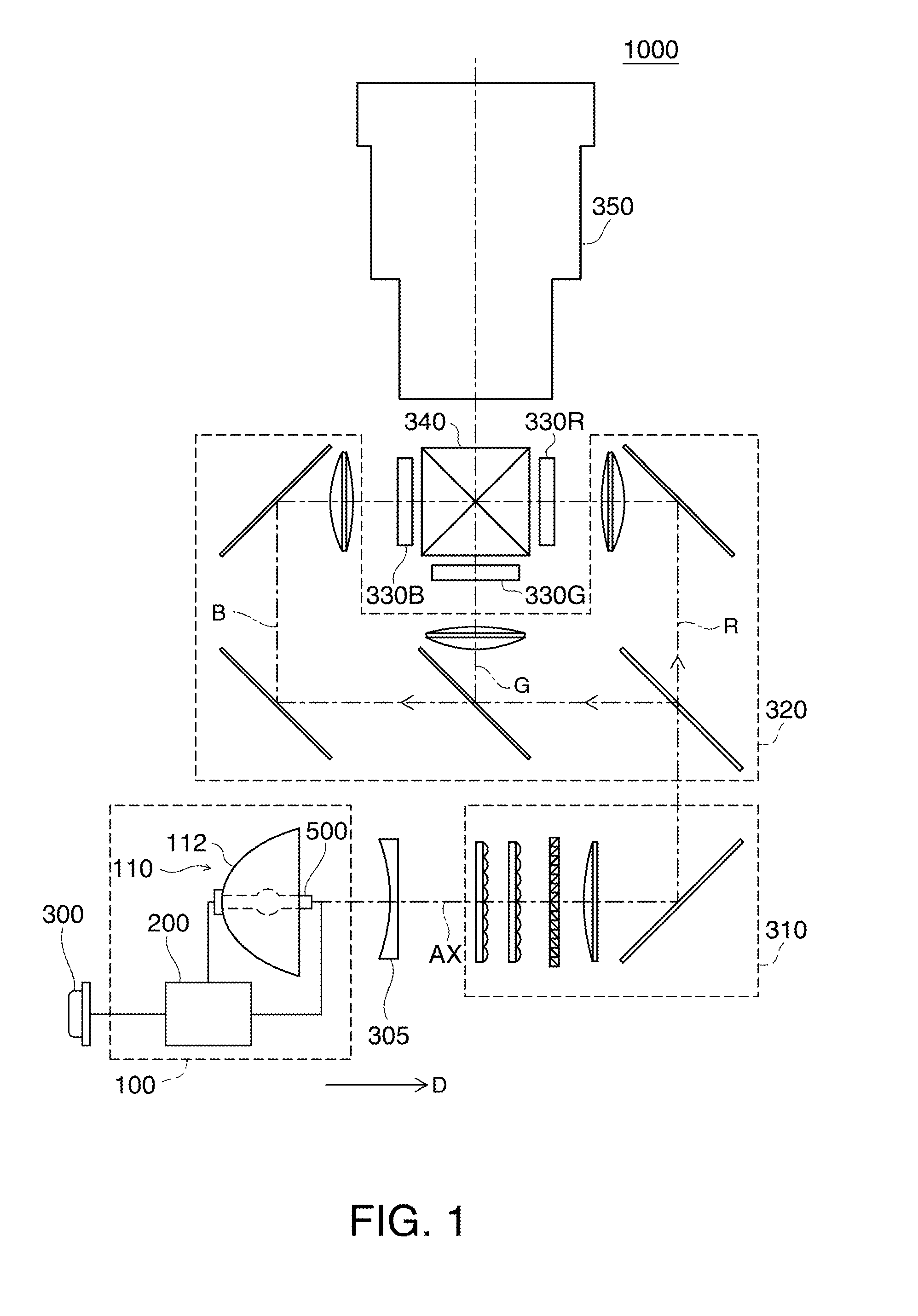Discharge lamp drive device, discharge lamp drive method, light source device, and projector
a discharge lamp and drive device technology, applied in the direction of energy-saving lighting, instruments, sustainable buildings, etc., can solve the problems of difficult fused concaves and convexes at the tips of the electrodes, low fusing energy generation, and decreased fusion quantity so as to prevent the generation of flicker fk, the flatness of the projections 532p and 542p is further promoted, and the effect of decreasing the quantity
- Summary
- Abstract
- Description
- Claims
- Application Information
AI Technical Summary
Benefits of technology
Problems solved by technology
Method used
Image
Examples
first embodiment
A-5. Modified Examples of First Embodiment
[0097]Modified examples of the first embodiment are hereinafter described.
modified example 1 of first embodiment
[0098]FIG. 9 is a timing chart showing modulation of the duty ratio of the alternating current to be outputted to the discharge lamp according to a modified example 1 of the first embodiment. In the first embodiment, the period of modulation is the one cycle Ta constituted by 16 division terms. According to the modified example 1, however, the period of modulation contains two cycles Ta each of which has the same cycle pattern as that of the first embodiment. It is possible to determine the period of modulation as a period containing three, four or more plural cycles Ta.
[0099]The maximum period for modulation may be determined as period until the end of the low power mode. According to this structure, the fusion quantity in the low power mode can be maintained at a large quantity even after elapse of long time from power reduction. In this case, generation of flicker can be securely prevented for a longtime after power reduction.
modified example 2 of first embodiment
[0100]According to the structure in the modified example 1 shown in FIG. 9, the change pattern of the duty ratio of the initial cycle Ta is the same as the change pattern of the duty ratio of the next cycle Ta. However, the change of the duty ratio for each step may be increased with elapse of time by using a change pattern of the later cycle Ta different from the change pattern of the earlier cycle Ta.
[0101]FIG. 10 is a timing chart showing modulation of the duty ratio of the alternating current to be outputted to the discharge lamp in a modified example 2 of the first embodiment. As shown in the figure, the change for each step is 5% in the initial cycle Ta, but is increased to 6% in the next cycle Ta. This structure has two cycles Ta, but may contain three or more cycles Ta whose change for each step increases as in the later cycles Ta. In this structure, the change for changing the duty ratio for each step increases with elapse of time, and thus stable generation of arc and ther...
PUM
 Login to View More
Login to View More Abstract
Description
Claims
Application Information
 Login to View More
Login to View More - R&D
- Intellectual Property
- Life Sciences
- Materials
- Tech Scout
- Unparalleled Data Quality
- Higher Quality Content
- 60% Fewer Hallucinations
Browse by: Latest US Patents, China's latest patents, Technical Efficacy Thesaurus, Application Domain, Technology Topic, Popular Technical Reports.
© 2025 PatSnap. All rights reserved.Legal|Privacy policy|Modern Slavery Act Transparency Statement|Sitemap|About US| Contact US: help@patsnap.com



